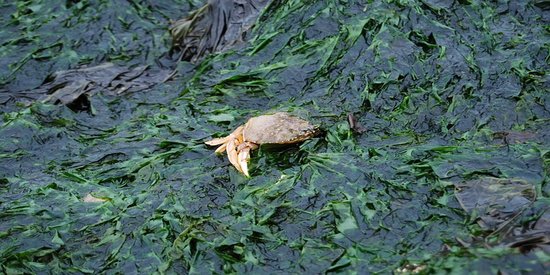Carbon pricing key to saving world's best ally in climate fight: seagrass
Media releaseA Deakin University scientist who is leading the charge in the emerging field of blue carbon research will today tell a global audience a price on carbon could be leveraged to fund the protection of the world’s biggest asset in the fight against climate change – seagrasses.
Dr Peter Macreadie, from Deakin’s Centre for Integrative Ecology, within the School of Life and Environmental Sciences, is a plenary speaker at the International Seagrass Biology Workshop, held in Wales from Sunday.
Dr Macreadie, an Australian Research Council Discovery Early Career Researcher Award Fellow, said that the biggest weapons against climate change were in the grasses at the bottom of the sea, rather than in the earth’s trees.
He said capitalisation of the global carbon pricing movement would help scientists show both the economic and environmental benefit of seagrasses.
“Unfortunately seagrasses are not a charismatic species and are often overshadowed by coral reefs, but the work they do is massive,” Dr Macreadie said.
“Seagrass meadows account for more than 10 per cent of the ocean’s total carbon storage, and per hectare they hold twice as much carbon dioxide as rain forests.
“Seagrasses are among the planet’s most effective natural ecosystems for sequestering carbon; but when degraded they can leak ancient carbon into the atmosphere and accelerate global warming.
“We’ve already reached a point where at least 50 per cent of seagrass beds have disappeared, and that’s through human impacts like land run-off, coastal development, over-fishing and dredging. More needs to be done now to protect these delicate ecosystems before it’s too late.”
The biannual International Seagrass Biology Workshop is the only meeting of its kind for scientists to discuss global approaches to protecting the world’s seagrass meadows.
About 175 delegates will be attending from 30 different countries, with Australia considered a world-leader in the field.
Dr Macreadie’s talk will cover six years of research into the dynamics of carbon cycling within seagrass ecosystems, and how a carbon price could be leveraged to fund their protection.
“We need to focus on seagrass’ carbon sequestration abilities, capitalise on this and make a business case for its protection, because we can put a price on this carbon,” he said.
“Our natural environment provides half the world’s GDP, so we need to invest now at a time when the benefits will far outweigh the costs.”
Australia has more seagrass than anywhere else in the world, and will be among the first countries to include blue carbon in its national greenhouse gas inventory.
Dr Macreadie said while carbon storage was his focus, a carbon price was an innovative financing tool that brought many co-benefits outside of addressing climate change.
“When you look after seagrasses you also stabilise coastal areas, improve fisheries and maintain important animal habitat and feeding grounds,” he said.
“At the moment there is a severe lack of resources and funding to do on the ground restoration of seagrass meadows. Eventually there will be none left if nothing is done, but the carbon pricing mechanism offers us a great way to turn that around.”
Dr Macreadie is the leader of Deakin’s Blue Carbon Lab, which specialises in devising ways to maximise carbon storage gains in coastal ecosystems (seagrass, saltmarshes and mangroves) and minimise their losses.
WHAT: International Seagrass Biology Workshop
WHERE: Nant Gwrtheyrn, Wales
DATE: Monday 17 October, 2016
TIME: 8.30am BST (local time), 5.30pm AEST (Australian Eastern Standard Time)
Share this story

